Filipino fusion cuisine embodies the dynamic evolution of Philippine gastronomy, blending traditional Filipino flavors with global culinary influences. This innovative culinary style celebrates creativity and experimentation, resulting in dishes that marry indigenous ingredients with international techniques and ingredients. From lumpia to pancit and taho, Filipino fusion cuisine delights in surprising the palate with bold and inventive flavor combinations. Reflecting the Philippines' history as a cultural crossroads, these fusion creations pay homage to the country's diverse culinary heritage while embracing contemporary trends and global tastes. Each bite tells a story of innovation, diversity, and the vibrant spirit of Filipino cuisine.
Lumpia
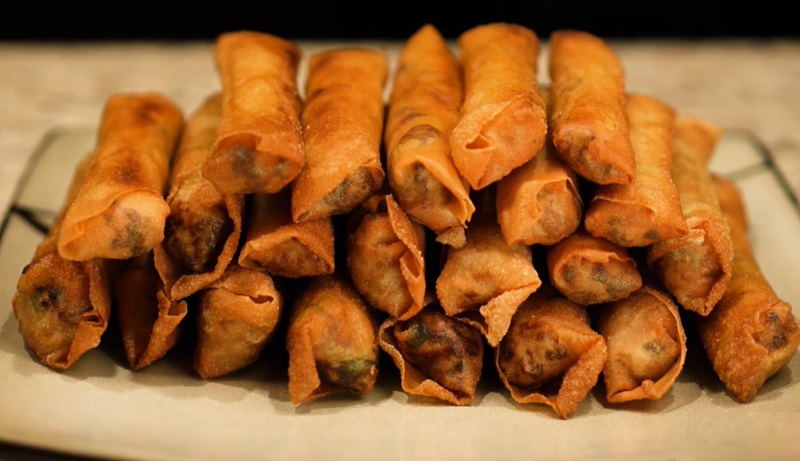
Lumpia is a popular Filipino dish that showcases the country's rich culinary history and fusion of flavors. It is a delicious combination of Spanish and Chinese influences, resulting in a unique and flavorful experience. Lumpia consists of thin wrappers stuffed with a delightful mix of ingredients, then skillfully deep-fried to achieve perfection. While the filling can vary, it typically includes minced pork, shrimp, assorted vegetables like carrots, cabbage, and bean sprouts, as well as a blend of spices and seasonings. What truly sets lumpia apart is its distinct flavor and texture. The savory filling is bursting with umami, while the wrapper turns wonderfully crispy and golden brown when fried. To enhance the overall experience, it is often accompanied by a delectable dipping sauce made from vinegar, soy sauce, and garlic, adding a sweet and tangy element to each bite.
Pancit
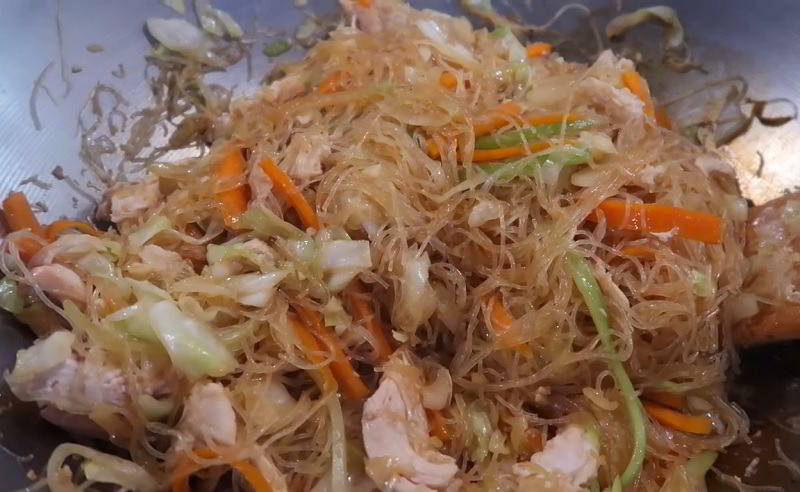
Pancit is a fusion of Chinese and Philippine cuisine. It was introduced to the Philippines by Chinese immigrants. This versatile dish is a staple in Filipino cuisine and has different regional variations. One of the most common types is Pancit Canton, which consists of stir-fried egg noodles cooked with a combination of vegetables and a selection of meats such as chicken, pork, or shrimp. The noodles are seasoned with soy sauce, garlic, and other spices to create a savory and flavorful taste. Another well-liked variation is Pancit Bihon, which uses rice vermicelli noodles instead of egg noodles. Similar to Pancit Canton, it is cooked with a mix of vegetables and meat, resulting in a light and delicate dish. Pancit Malabon is a specialty from Malabon City, featuring thick rice noodles topped with a rich sauce made from shrimp, ground pork, and annatto oil. It is garnished with various toppings like hard-boiled eggs, chicharon (crispy pork rinds), and green onions. Pancit not only offers delicious flavors but also symbolizes long life and good luck in Filipino culture, making it an essential dish for celebrations and gatherings.
Taho

Taho, a beloved snack in the Philippines, is a popular choice for a quick and satisfying breakfast. This delightful and nutritious dish is crafted from soft tofu, sweet syrup, and tapioca pearls. Street vendors, known as "magtataho," serve it hot in small plastic cups. The star ingredient of taho is the soft tofu, which is carefully prepared from soybeans. It is then combined with a luscious syrup made from caramelized brown sugar, resulting in a truly delightful taste. To enhance the texture, small tapioca pearls, locally known as "sago," are added to the taho. The combination of the velvety tofu, the sweetness of the syrup, and the chewiness of the tapioca pearls creates a perfect blend of flavors and textures.
Siopao
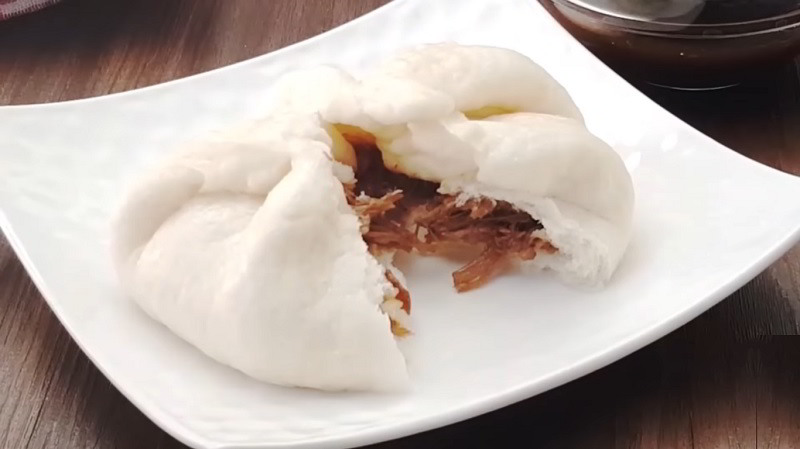
Siopao is a popular dish in the Philippines that showcases the vibrant fusion of different culinary influences. This delectable snack consists of a steamed bun filled with a flavorful mixture of meat, typically pork or chicken, combined with a variety of seasonings and spices. The origin of siopao can be traced back to Chinese cuisine, specifically the Cantonese cha siu bao. However, the Filipino version has undergone its own unique transformation, incorporating local ingredients and techniques. This fusion is what makes siopao stand out amongst other buns. One of the distinct characteristics of Philippine siopao is the use of a slightly sweet and fluffy bun, which is a result of Filipino baking techniques. The filling is often a savory combination of tender meat, garlic, onions, and soy sauce, giving it a rich and flavorful taste. The fusion of Chinese and Filipino flavors in siopao truly exemplifies the diverse and delicious nature of Philippine cuisine.
Hopia
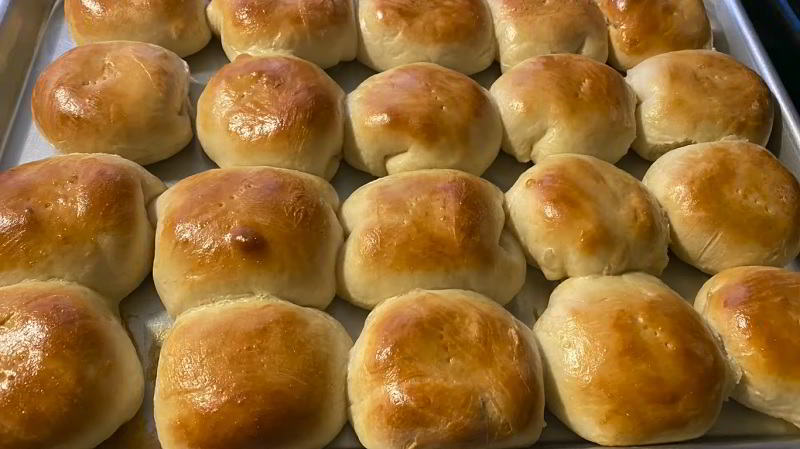
Hopia is a popular Filipino pastry known for its delicate layers of flaky dough and sweet, flavorful fillings. Originating from Chinese influence, it has become a beloved treat in the Philippines. The pastry is typically filled with various sweet fillings such as mung bean paste, lotus seed paste, or sweetened winter melon. These fillings are enveloped in the dough, shaped into small squares, and then baked until golden brown. Hopia is enjoyed as a snack or dessert, often paired with tea or coffee. Its irresistible combination of textures and flavors makes it a cherished delicacy across the Philippines.
Kiamoy
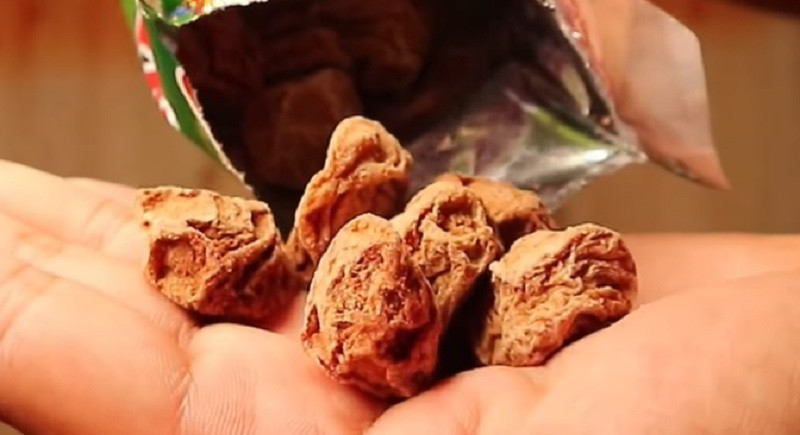
Kiamoy is a delightful Filipino snack created by preserving prunes, dried sour plums, or apricots in a mixture of vinegar and brine. These treats are typically covered in a powdery blend of licorice, anise, li hing, sugar, and salt, giving them their distinct red, orange, or light brown hue. Originating from Chinese Filipino immigrants, kiamoy bears similarities to li hing mui treats found in Chinese cuisine. The term "kiamoy" is derived from the Philippine Hokkien Chinese phrase for "salted plum."
Lomi
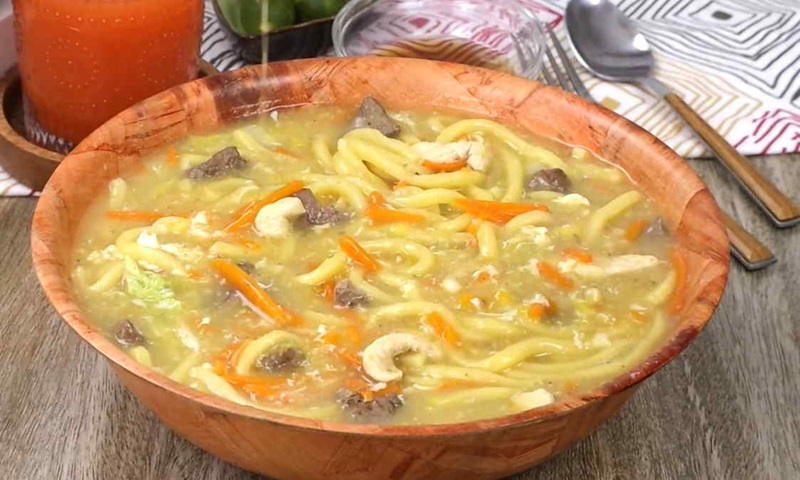
Lomi is a popular Filipino dish that exemplifies the country's rich culinary heritage and fusion cuisine. This delectable dish is a blend of Chinese and Filipino influences, creating a unique and flavorful bowl of goodness. Lomi is a noodle soup dish that features thick egg noodles, typically cooked in a rich and savory broth. The broth is made from a combination of ingredients like chicken or pork stock, soy sauce, garlic, and onion. To add depth of flavor, it is often seasoned with a medley of spices and herbs. The fusion aspect of lomi comes from the additional ingredients and toppings. It is common to find Chinese influences in the form of sliced pork, chicken, or seafood, along with vegetables like cabbage, carrots, and mushrooms. Some variations even include Chinese sausages or liver. The dish is then garnished with toppings like fried garlic, chopped spring onions, and a squeeze of calamansi or lime juice.
Mami Soup
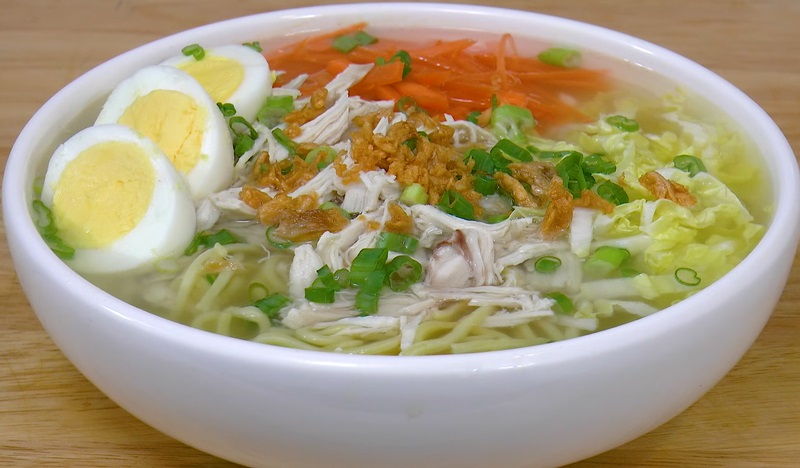
Mami soup is a beloved Filipino dish known for its comforting and flavorful qualities. This noodle soup typically includes egg noodles, chicken or beef, and a delicious broth. Originally from Chinese cuisine, mami soup has been embraced by Filipinos and adapted over time. The thin and slightly chewy egg noodles add a delightful texture, while the tender, thinly sliced meat makes each spoonful enjoyable. The rich and savory broth is often seasoned with soy sauce and garlic, giving it a distinct Filipino taste. Garnished with chopped green onions, fried garlic, and a hard-boiled egg, mami soup is not only delicious but also visually appealing. Some variations may include vegetables, tofu, or meatballs.
Pancit Malabon
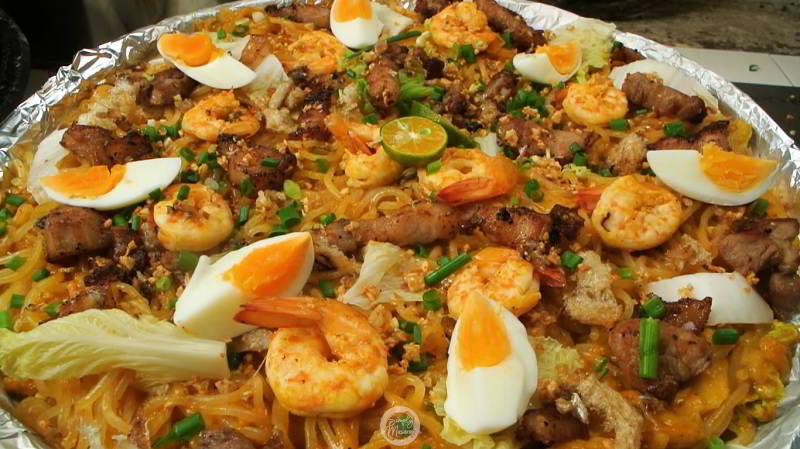
Pancit Malabon is a well-loved noodle dish from Malabon City, Philippines. It is a delicious and satisfying meal that is typically enjoyed on special occasions and celebrations. The dish features thick rice noodles called "pancit Malabon noodles," which are stir-fried with a medley of ingredients and topped with a flavorful sauce. The toppings can include shrimp, squid, smoked fish flakes, pork cracklings, and hard-boiled eggs. The sauce is made with shrimp broth, annatto seeds oil, and a blend of seasonings, resulting in a unique and delectable taste. The noodles are then tossed in the sauce until they absorb all the amazing flavors. Pancit Malabon is known for its vibrant colors and bold flavors, often garnished with fresh calamansi and chopped green onions to add a refreshing and tangy twist.
Odong
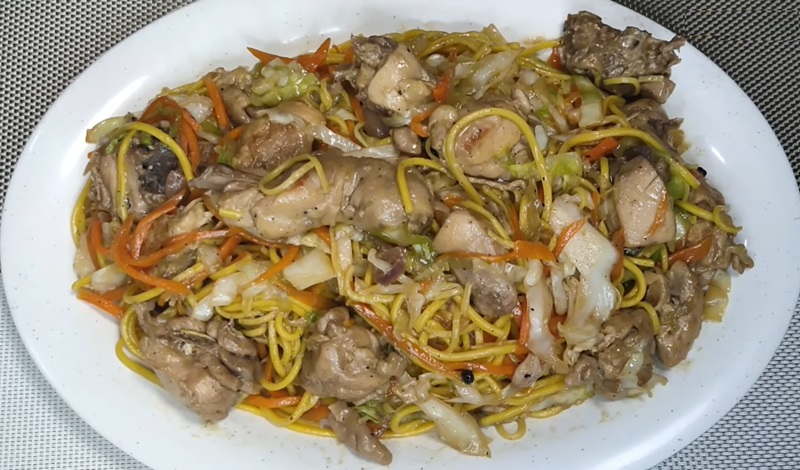
Odong is a delightful Filipino fusion cuisine that combines the flavors of Japanese udon noodles and traditional Filipino ingredients. This delicacy features thick rice noodles, an assortment of meats like chicken, pork, and shrimp, and a flavorful broth made from chicken or pork stock, soy sauce, and various spices. The noodles have a chewy and slightly elastic texture, providing a delightful contrast to the tender meat and crisp vegetables. The combination of meat flavors creates a savory and umami-rich broth that is both satisfying and nourishing. Odong is garnished with fresh herbs like spring onions and cilantro, adding a burst of freshness.
Goto
-1708427453.jpg)
Goto is a popular Filipino dish that is a fusion of Spanish and Asian flavors, representing the rich culinary heritage of the Philippines. It is a comforting rice porridge made with glutinous rice and beef tripe, simmered in a flavorful broth with various spices and seasonings. Goto is traditionally served with condiments such as sliced green onions, fried garlic, and calamansi (Philippine lime). The dish traces its origins back to the Spanish colonization period, where Spanish influences introduced ingredients like beef tripe and the concept of rice porridge. Over time, Filipino cooks added their own unique touch, incorporating local spices and flavors to create a distinct taste. Goto is a beloved comfort food in the Philippines, often enjoyed as a breakfast. Its warm and hearty nature makes it perfect for rainy days or whenever a comforting dish is desired. The tender beef tripe, combined with the sticky rice and aromatic broth, creates a harmonious blend of textures and flavors that is both satisfying and comforting.
Pancit Molo
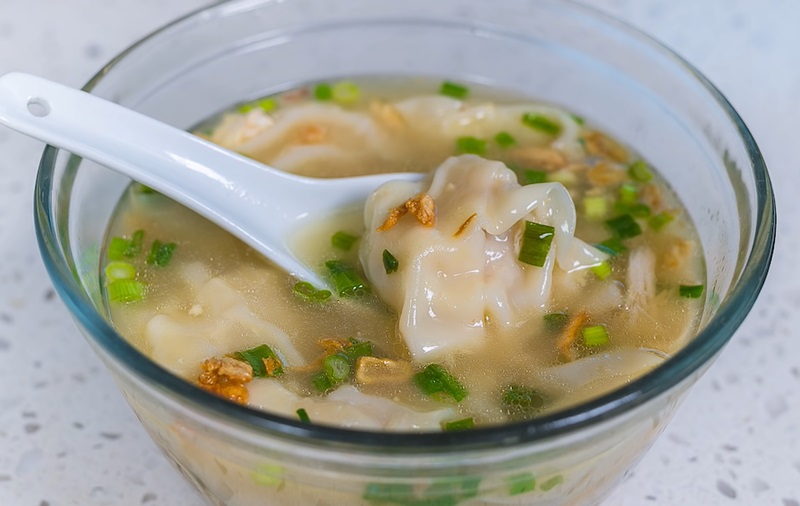
Pancit molo is a mouthwatering Filipino dish that showcases the fusion of Chinese and Filipino culinary influences. Originating from the province of Iloilo in the Philippines, this soup dish is a comforting and flavorful treat. At its core, Pancit molo is a dumpling soup. The dumplings, called "molo," are made from ground pork and shrimp, mixed with aromatics such as garlic, onions, and ginger. These delicate dumplings are then carefully wrapped in thin wonton wrappers and cooked in a savory broth, which is typically made from chicken or pork bones. What sets Pancit molo apart is its unique blend of Chinese and Filipino flavors. The Chinese influence is evident in the dumplings themselves, as well as the use of soy sauce and sesame oil for seasoning. On the other hand, the Filipino touch comes through in the addition of local ingredients like annatto seeds for color and a hint of sweetness. Pancit molo is garnished with green onions, garlic chips, and a squeeze of calamansi juice for a refreshing citrusy kick.
Maki Mi

Maki mi is a beloved Filipino soup with Chinese origins that brings together a delightful combination of flavors. The soup's base is made from a harmonious blend of chicken or pork broth, infused with aromatic spices like garlic, onion, and soy sauce. The noodles, whether they be egg or wheat, are perfectly cooked and soak up the rich and savory essence of the broth. What truly sets Maki mi apart are the tantalizing toppings that adorn this culinary masterpiece. Sliced pork, chicken, or shrimp, along with vegetables like cabbage, carrots, and mushrooms, add a touch of star-studded elegance to the soup. Some variations even include elements like fried tofu or boiled eggs, providing both protein and texture. Maki mi is best enjoyed steaming hot, making it a filling and comforting meal that is ideal for rainy days or whenever the desire for something warm and satisfying strikes. As a beloved Filipino comfort food, Maki mi embodies the heartiness and complexity of flavors that make it a top choice for those seeking a comforting and satisfying culinary experience.
Pancit Choca
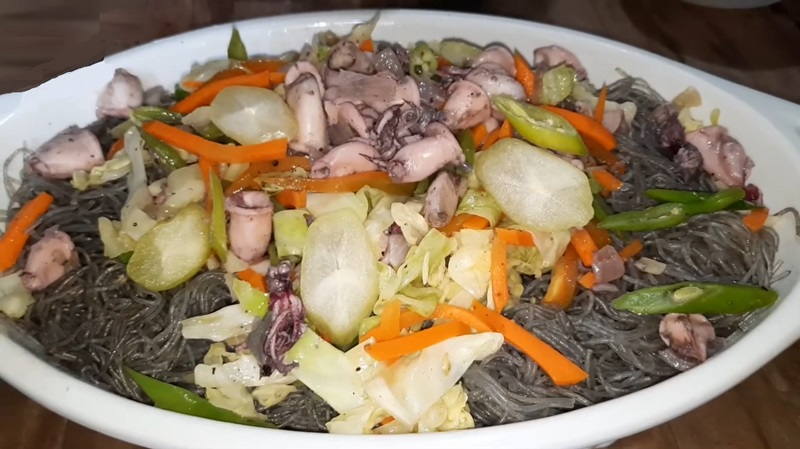
Pancit choca, a traditional Filipino noodle dish from Cebu, Philippines, is a delectable fusion of Chinese and Filipino flavors. Sautéed noodles, veggies, and meats like chicken, pork, and shrimp are skillfully combined to create this tasty dish. The noodles, made from ground rice, are thicker and chewier than regular pancit noodles, enhancing the dish's overall appeal. Stir-fried with garlic, onions, and soy sauce, pancit choca boasts a savory and slightly sweet taste. What makes it truly special is the addition of chicharon, crispy pork cracklings sprinkled on top, providing a delightful crunch and richness. To add a refreshing tang, it is garnished with green onions and calamansi, a local citrus fruit.
Pancit Buko
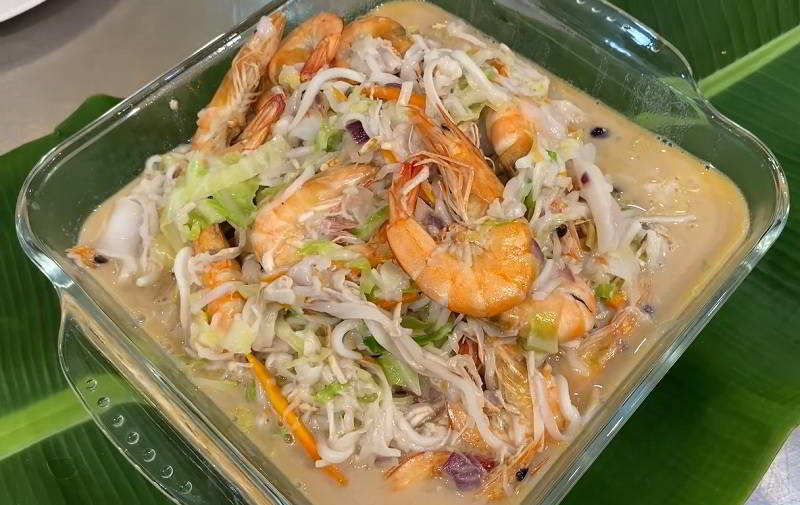
Pancit buko, a beloved soup from the Philippines, is known for its delightful combination of noodles, young coconut, and a flavorful broth. To prepare this dish, garlic, onions, and meat (such as chicken or pork) are sautéed in a large pot. Then, water or broth is added along with buko juice, which adds a touch of sweetness to the soup. The noodles are cooked in the broth until they soak up all the rich flavors. The addition of young coconut meat gives the soup a distinctive texture and refreshing taste. To enhance the dish further, sliced green onions, fried garlic, and calamansi (Philippine lime) are often used as garnishes, adding additional layers of flavor and freshness. This delightful interplay of tender noodles, savory broth, and the subtle sweetness of buko creates a comforting and satisfying soup.






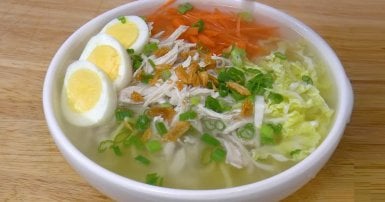

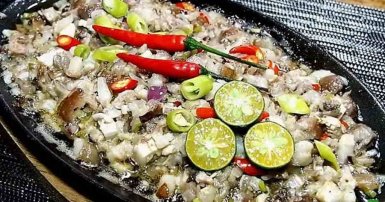


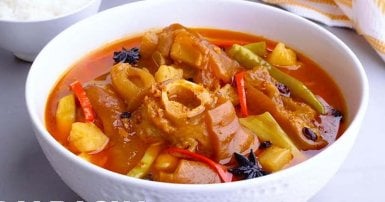

-1709813013.jpg)


